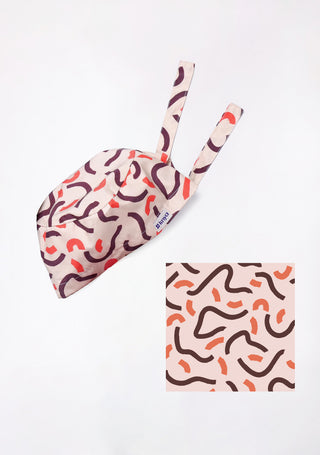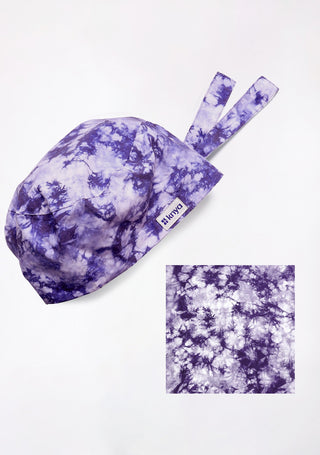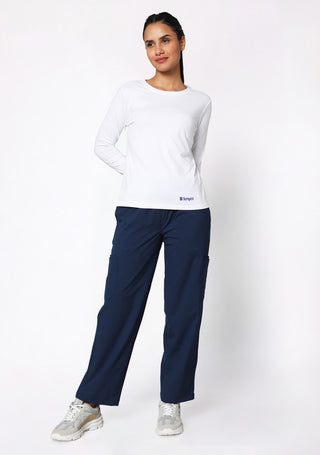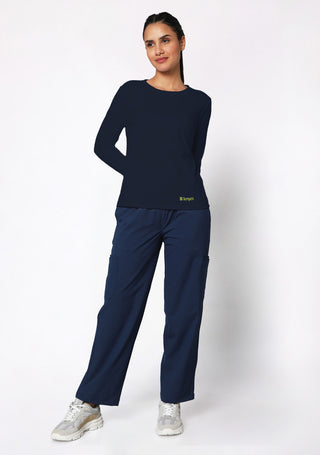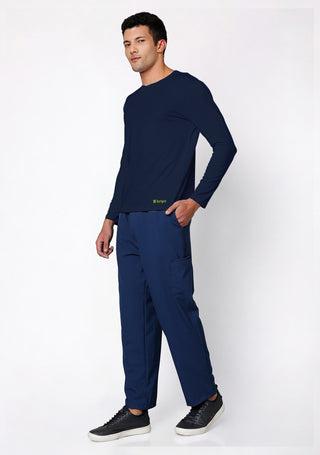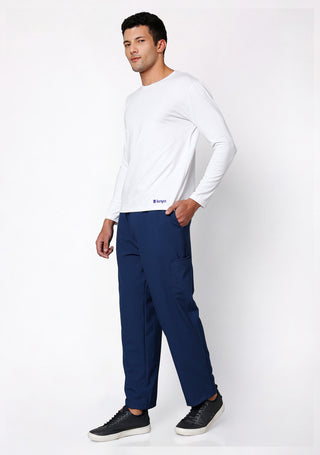Fabric is the most basic part of a lab coat. A good lab coat is not just about how it looks. It is about what it is made of. The kind of fabric used in lab coats decides how long it lasts, how well it protects, and how easy it is to wear. It also decides if the coat will stay clean, if it will feel too hot, or if it will fit well. Understanding these details helps in choosing the right lab coat for the right kind of work.
Knya makes lab coats by studying all these points. Each coat is designed with care, keeping the fabric and function in mind. This blog explains the different features of lab coat fabrics and what makes some lab coats better than others.
Ready to explore our amazing scrubs collection? Browse the best here
Role of Fabric in Lab Coats
Fabric gives the lab coat its strength, feel, and use. It should not tear easily. It should protect the body. It should not feel too heavy or too hot. The fabric also needs to be easy to clean. These needs are different in every job. So, the choice of fabric depends on the place where the coat is used.
Durability and Strength
In labs or clinics, clothes may get damaged. Lab coats face heat, spills, and movement. A weak fabric will tear or fade. A strong fabric will last longer.
Common fabrics include cotton and polyester blends. Cotton is soft and breathable. But it may wear out faster. Polyester is strong and keeps its shape even after many washes. Blended fabrics combine the good parts of both.
Knya lab coats are made using such blends to give strength with comfort.
Chemical Resistance
Some jobs deal with harmful chemicals. Lab coats must act like a cover. The fabric must stop chemicals from touching the skin.
Certain fabrics, like those made for fire or chemical work, offer better safety. These are not used in regular lab coats but may be used in special ones. Knya focuses on daily-use coats, where fabric blends give enough protection for most hospital and lab tasks.
Breathability and Ventilation
A coat that does not let air pass can make the body feel warm and sweaty. This can lead to discomfort during work.
Cotton allows air to pass. Polyester may not breathe as well but helps remove moisture from the skin. Blended fabrics are made to keep a balance. These fabrics feel better and help during long working hours.
Knya coats are made from breathable materials so that the body does not feel tired while wearing them.
Proper Fit and Movement
A coat must fit the body. It should not be too tight or too loose. A tight coat can block movement. A loose coat can get caught on things.
A good fit also makes the coat look clean and neat. The coat should cover enough of the body and allow the arms to move freely. Some coats come with adjustable sleeves or collars.
Knya lab coats are made in different sizes and styles for better fit and comfort.
Function of Pockets and Features
Lab coats are not just for covering the body. They help carry small items. These may include pens, a small notepad, or a pair of gloves.
Pockets should be deep enough and easy to reach. Some lab coats have inside pockets or side slits. Some also have loops to clip badges or tools.
Knya lab coats are made with practical pocket designs. The placement is made for easy use without bulk.
Length and Design
The length of the lab coat depends on the job. A long coat protects more of the body. A short coat helps in easy walking and movement.
In some places, long coats are used by doctors. Short coats are often worn by students or workers who move a lot.
Knya offers both short and long lab coats based on work needs.
Click here to explore comfortable lab coats and discover our complete collection of comfortable and stylish medical apparel
Ease of Washing and Cleaning
Lab coats must be cleaned many times. They should not shrink, fade, or tear in the wash.
Blended fabrics are easy to wash. They also dry quickly and keep their shape. Cotton may take longer to dry and may shrink if not washed right.
Knya coats are made from fabrics that are easy to clean and do not lose their look after several washes.
Professional Appearance
Even if the main goal is safety, a lab coat must also look neat. A wrinkled or stained coat gives a poor image. Clean and crisp fabric helps the wearer look ready for work.
Knya lab coats are made to stay smooth and hold their shape for a long time.
Made for All Genders
Men and women have different body shapes. A good lab coat should match these shapes. A coat that fits well makes work easier.
Knya makes coats for both men and women. They are shaped to give comfort and proper coverage.
Designed for Movement
Healthcare and lab work need bending, walking, and reaching. A stiff coat can make this harder. A flexible fabric moves with the body.
Knya fabrics are chosen to be soft and easy to move in.
Coats for Long Wear
Some shifts are long. A lab coat worn for many hours should not feel heavy. The fabric must not trap heat or feel rough on the skin.
Knya lab coats are light and smooth. They are made for day-long wear.
Fabric That Lasts
Some fabrics get old fast. They lose color, get holes, or become rough. A strong lab coat stays in shape and color for a long time.
Knya uses good-quality fabric that stays new-looking even after many uses.
Style and Fabric Together
The best lab coats are not only useful but also look good. A stylish coat still needs strong fabric. Softness and shape matter too.
Knya balances fabric science and coat design to give a neat and lasting coat.
Conclusion
Lab coats are used in many jobs, but all good lab coats start with the right fabric. A high-quality lab coat needs strong material that does not tear, protects the body, fits well, and stays clean. The fabric must also let the body move and breathe.
Knya designs lab coats with all of this in mind. Every coat is made to do the job and look neat while doing it. The science behind the fabric is simple but very necessary. A good fabric means better work, better safety, and better comfort.


